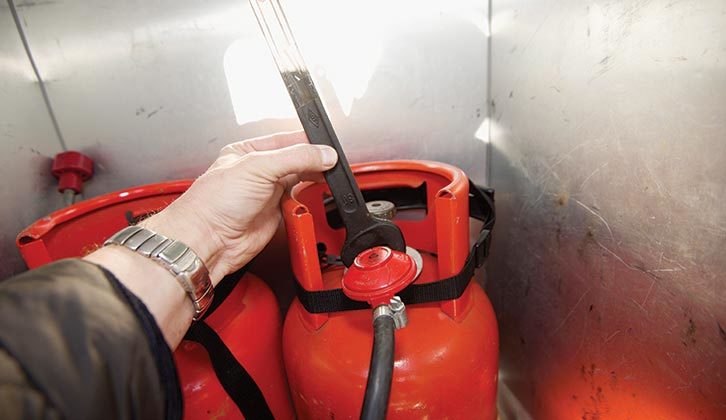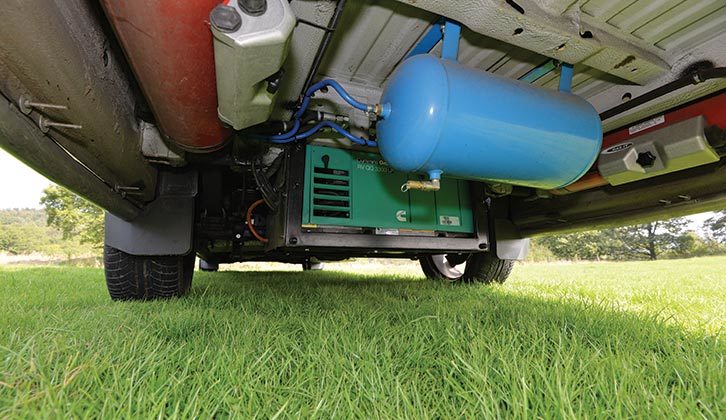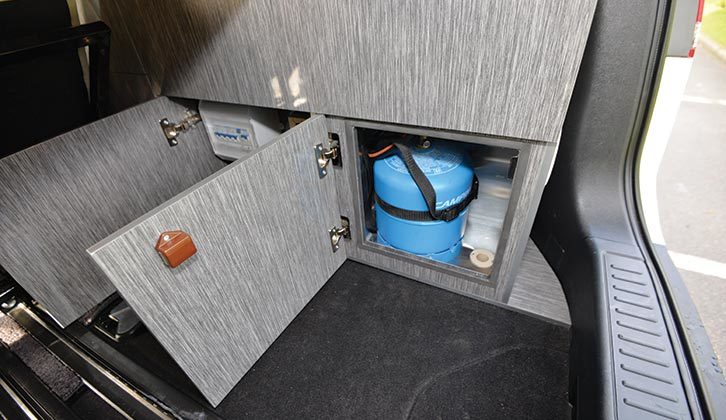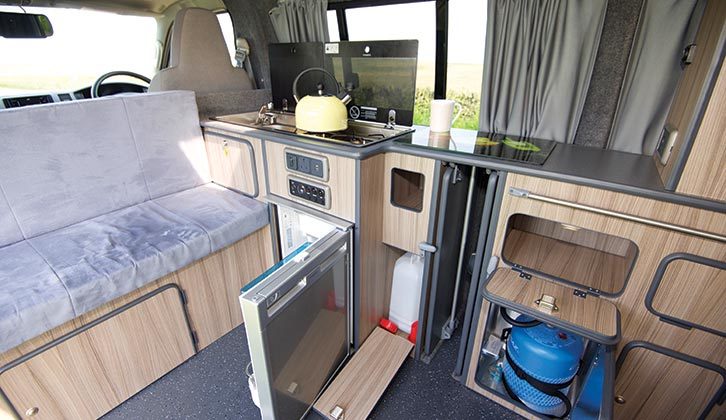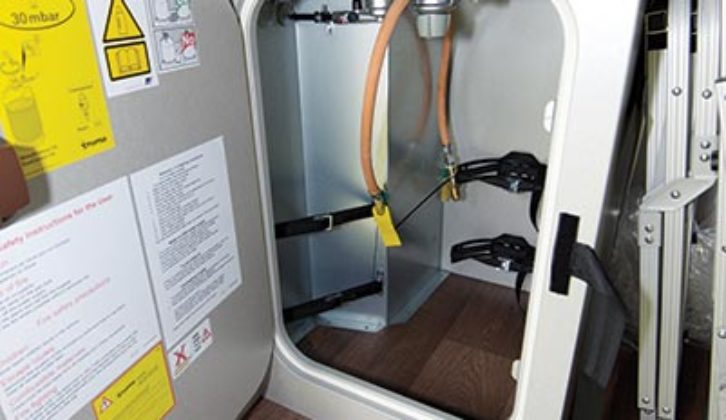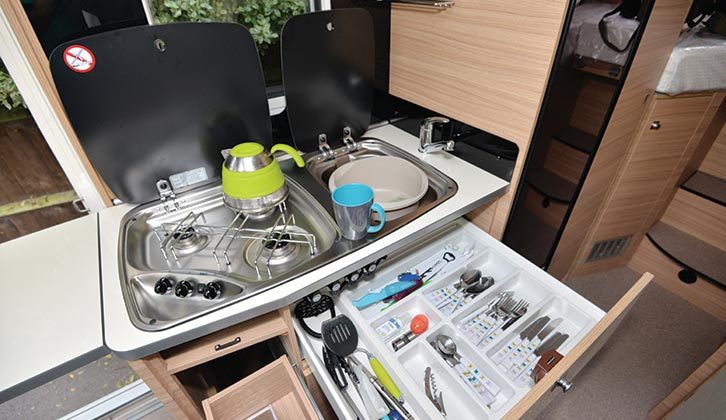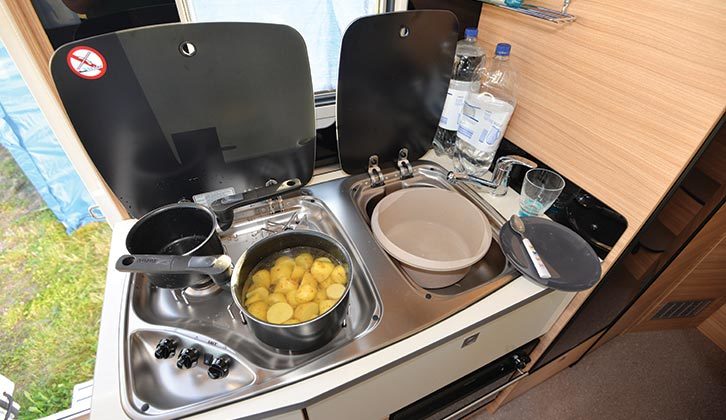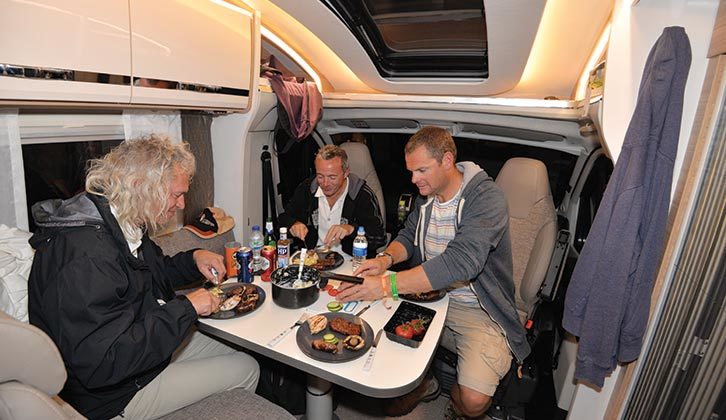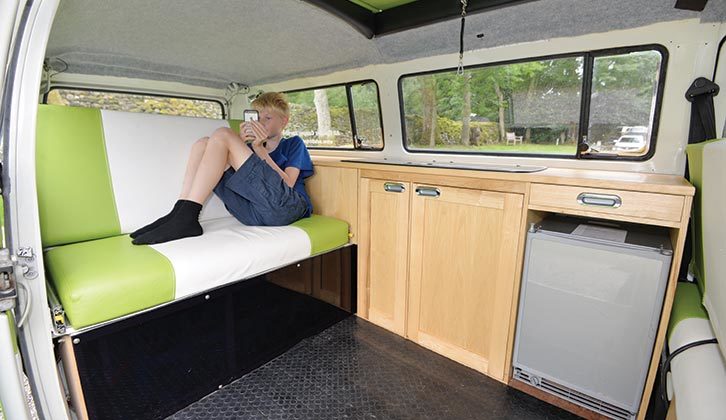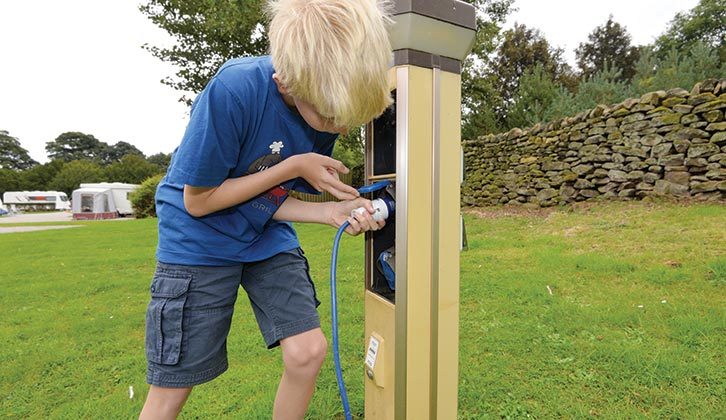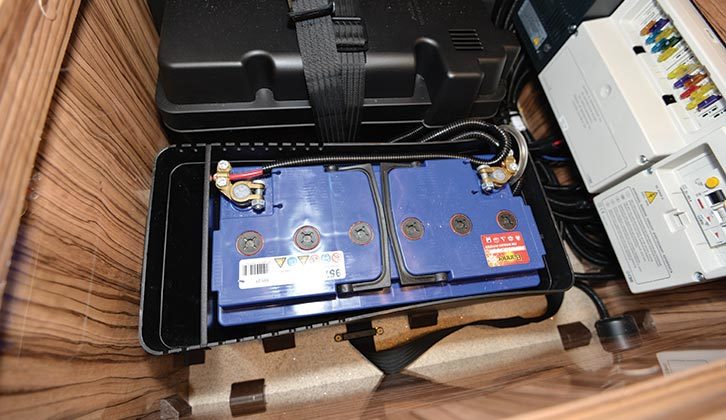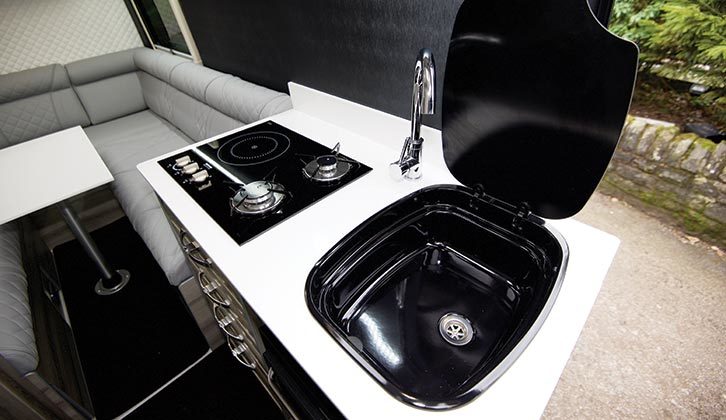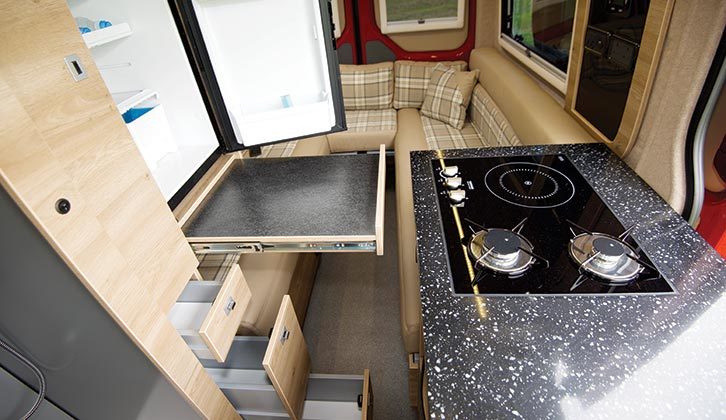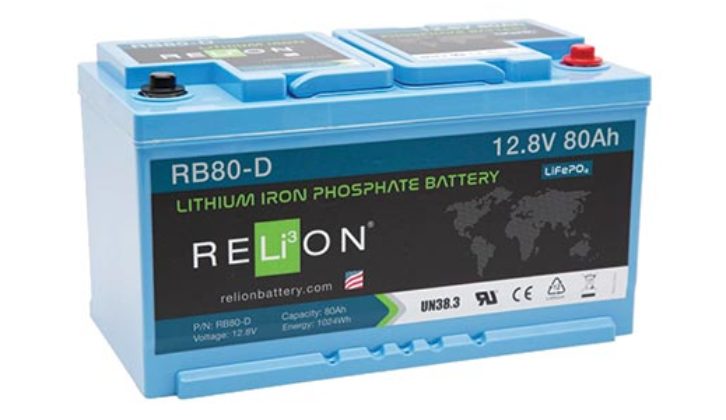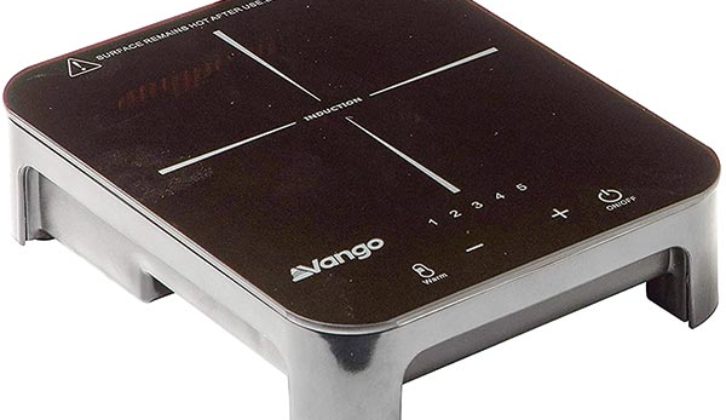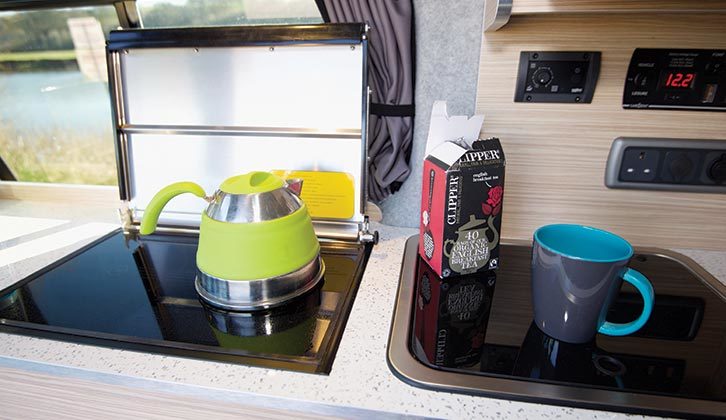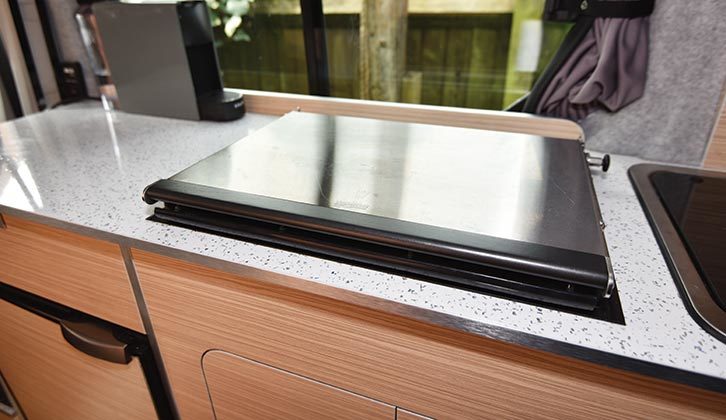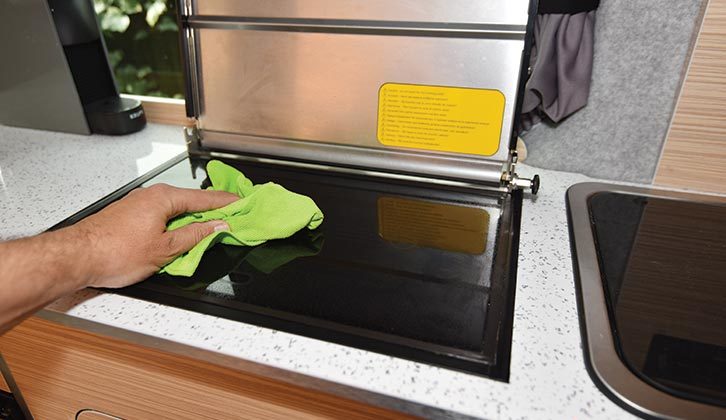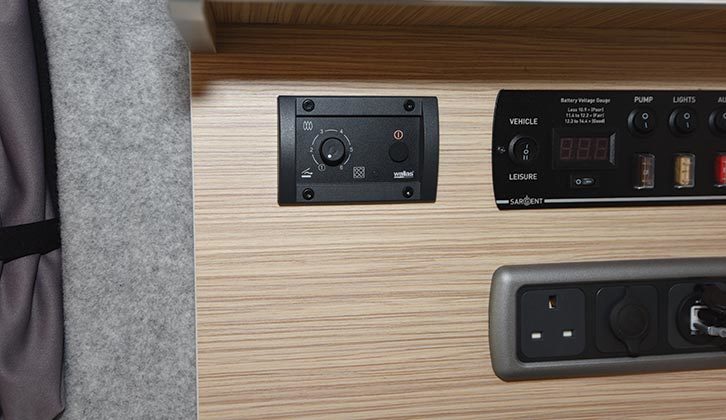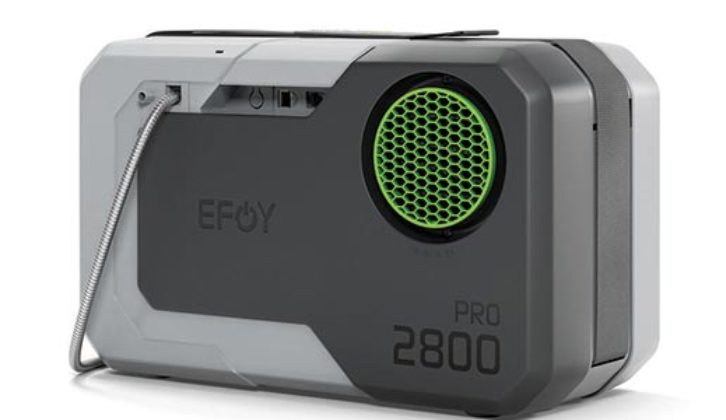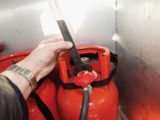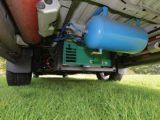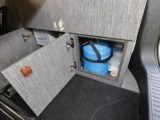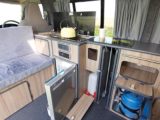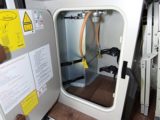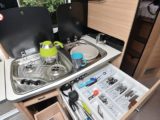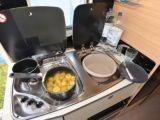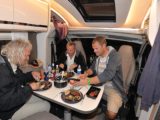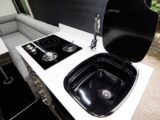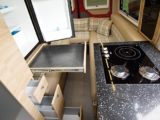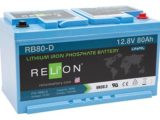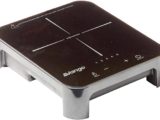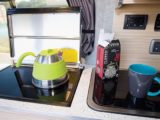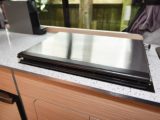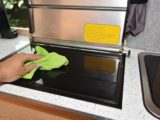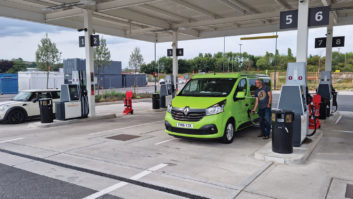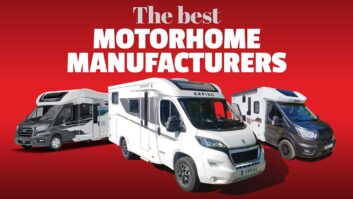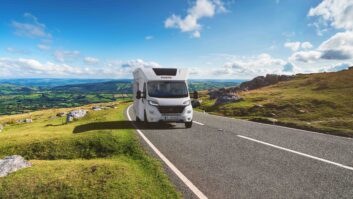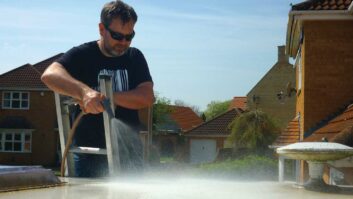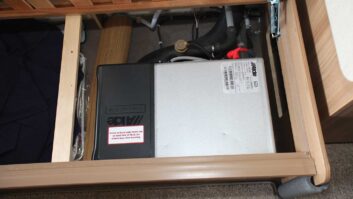As with many motorhomes, your leisure vehicle is probably equipped with a gas-powered hob and heating. Gas works well in this application: it’s energy-dense and heats up the hob very quickly.
The downside is that you’ll need a space-stealing gas locker or an underslung tank to house it. If you’re using traditional gas bottles, you’ve got the age-old delight of having to lug the empty cylinder to the motorhome site shop/garage/garden centre and then staggering back with the heavier full one. And why do they always run out at night? When it’s freezing cold and all retailers within a 50-mile radius are closed? Perhaps there’s a better way…
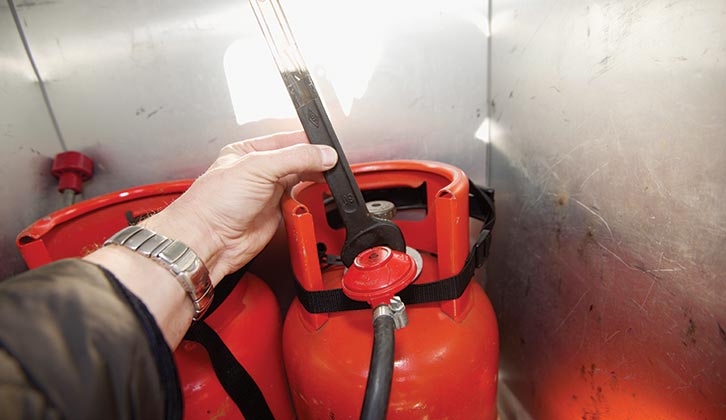
Gas systems
Orange propane bottles work best for all-year touring (it gases to a lower temperature), while the compact blue butane bottles are handier for seasonal tent camping.
Refillable gas bottles (such as Gaslow or GAS IT) or LPG tanks (Autogas 2000) not only get around the problem of lugging bottles and messing about with spanners, they’re also far cheaper to refill – typically around 60-67p per litre.
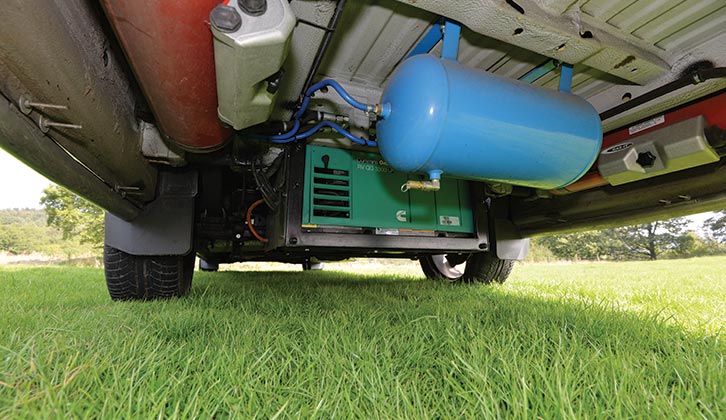
You can refill these tanks (via an external fill point) at any LPG filling station – some are on regular forecourts, some at other retail outlets.
This does make you reliant on the LPG network throughout the UK and Europe. If you don’t live near an LPG filling station, it can be challenging. Across Europe, availability can be a bit patchy, so it’s worth preplanning your refill points.
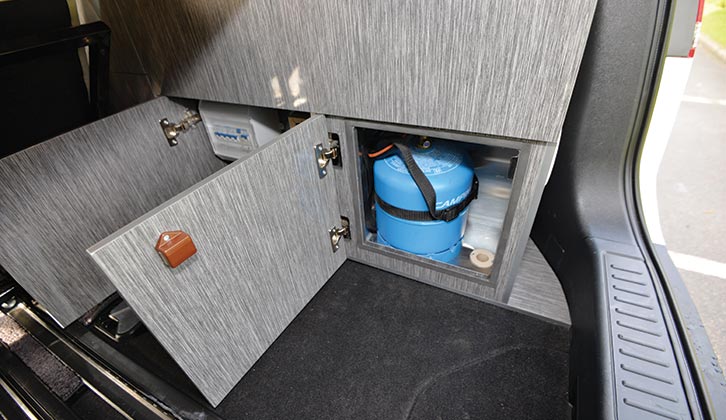
Having run an LPG-powered camper across Europe, I also found the pumps were not as well maintained as their petrol/diesel counterparts. In addition, you need to use different filler nozzle adapters for different countries – a pack of three costs about £30 and covers most of Europe.
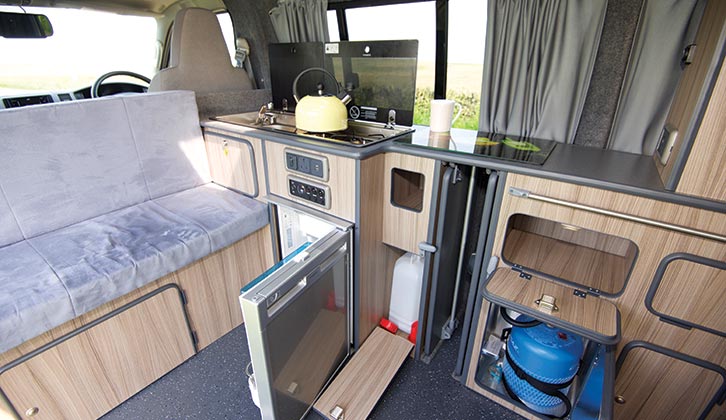
It’s important to bear in mind that a byproduct of gas burning is carbon monoxide, so it’s vital to have both a smoke alarm and a carbon monoxide detector fitted in your motorhome (find out more at www.myccc.co.uk/COsafety), and never to cook on a gas hob inside an awning or tent.
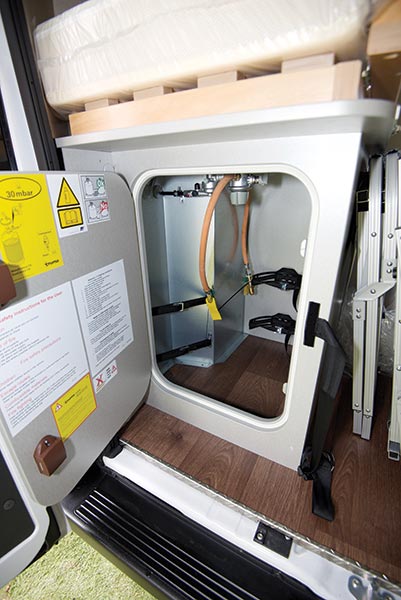
The pros of using gas in your motorhome
- It’s energy-dense
- Instant heat on the hob
- Bottles are widely available
- Hobs are cheap
The cons of using gas in your motorhome
- Needs extra tank or locker
- Takes up payload
- Gas bottles are a pain to lug about
- Bottled gas is expensive
- Gas hobs are harder to clean
- You’ll need spanners
- Naked flame can’t be used in an awning or tent
Electrical systems
With all of the current enthusiasm for electric vehicles, you’d think that an all-electric heating and hob system for a motorhome would make a great deal of sense.
Electric vehicles have a massive battery bank, so why not use it? The problem is energy density. Modern batteries are becoming increasingly efficient, but they just can’t pack in anywhere near as much power per inch as a fossil fuel.
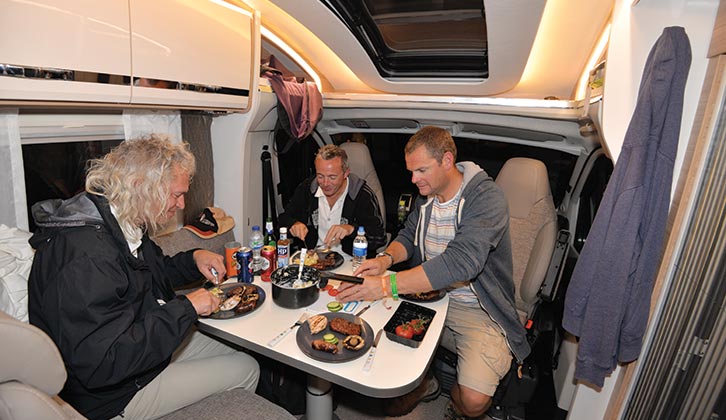
To give you an idea of the difficulty, propane has an energy density of around 7000W/hours per litre. A typical lead-acid battery can contain 100W/hours per litre, while electric vehicle lithium ion batteries output up to 620W/hours per litre. So even the most efficient batteries offer less than 10% of the energy density of propane.
So before considering an all-electric system, it’s really important to do the maths. While most leisure vehicles now come with energy-sipping LED lighting, accessories such as coffeemakers, toasters and microwaves are substantial power consumers. If you want to run all of these items, together with a hob and a heater, you will need an epic battery bank (expensive, bulky and impinges on your payload).
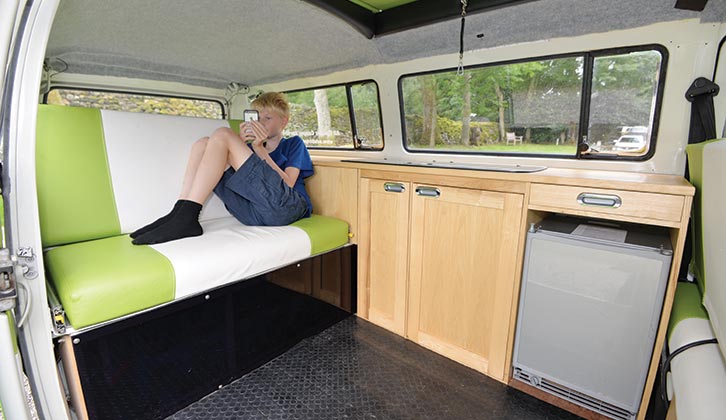
Lithium iron phosphate batteries solve some of the bulk and weight issues, but can cost eight to 10 times more than an equivalent lead-acid capacity. Lithium units are claimed to offer a deeper depth of discharge, though, so are not directly comparable.
Efficient hobs and space-heaters are essential. Older-style electric hotplates, which simply use a heating element under a metal disc or a halogen bulb to heat a glass panel, are not ideal. They’re slow to heat up, draw huge energy and are sluggish to respond to temperature changes.
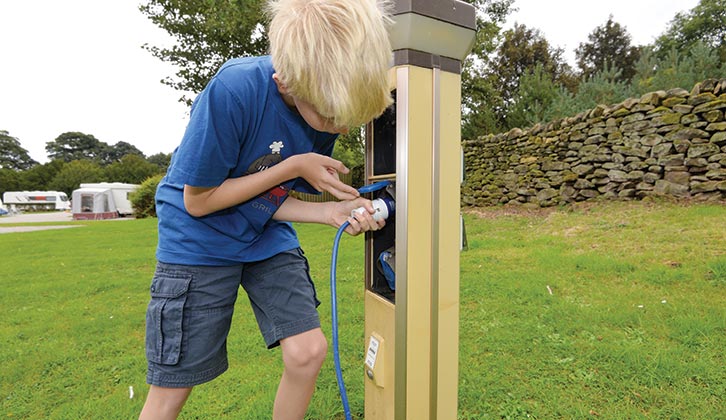
Induction hobs are a much better option – they heat rapidly, react quickly to temperature changes and are easy to wipe clean. A typical induction hob will provide 1000-1800W per ring and cost as little as £40. You do need special pans to cook on them, but again, these are cheap and plentiful. If you only want to use an induction hob on a mains hook-up, they work well.
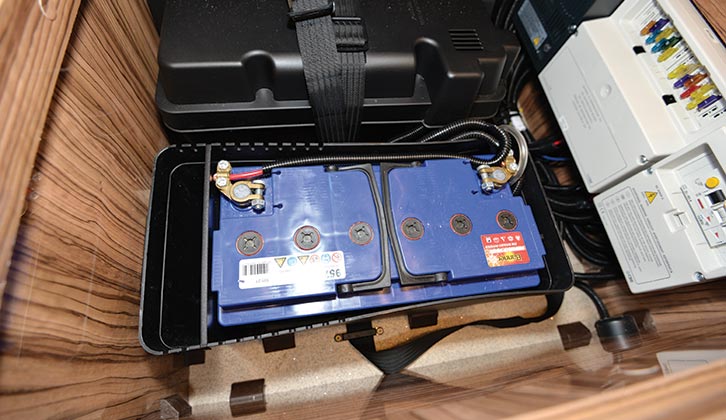
To use one without a hook-up requires a beefy inverter. Using an 1800W induction ring on full power can take a rather terrifying 150A out of a leisure battery. That can flatten a 100Ah lead-acid battery in less than 20 minutes.
You might think the sizeable onboard battery bank of an electric vehicle offers the solution. Again, it boils down to maths. Running a 2kW fan heater on its highest setting requires a 2000W continuous inverter, which will draw around 167A per hour out of your batteries.
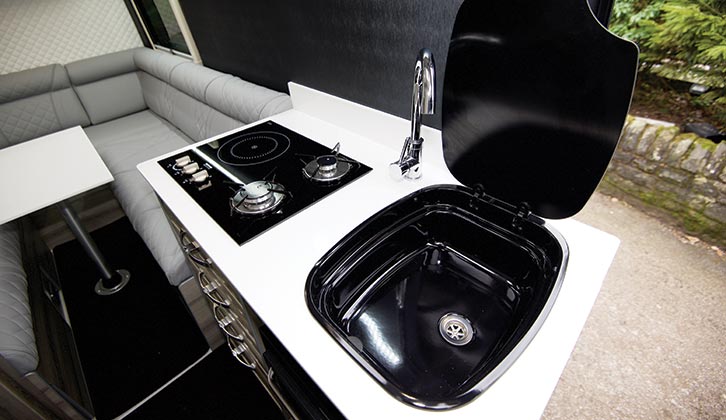
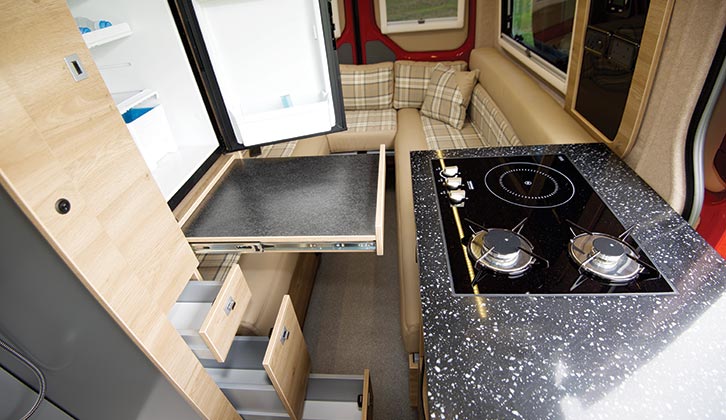
This is a huge drain. A Nissan e-NV200 van has a 40kWh battery pack, giving a claimed range of 186 miles. So your 2000W heater could drain it flat in 20 hours. Or if you run it for 10 hours, you will at least halve the vehicle’s range. Without an alternative power source (such as a generator or a fuel cell), this could create problems.
For tent camping, electrical systems can work quite well – a small, efficient 800W induction hob linked to a 12V battery and a 1000W inverter might work, but it’s bulkier than a gas hob.
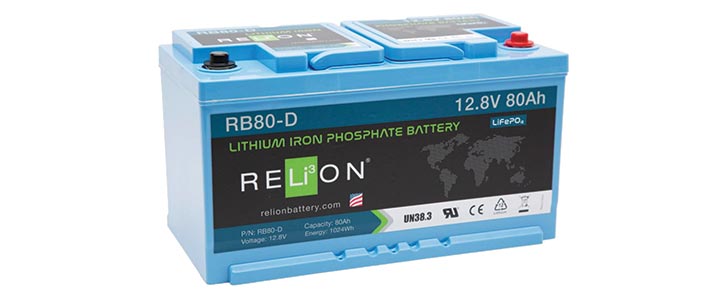
Another alternative is a fuel cell, with Efoy being the most widely known brand. These use methanol to create electricity to recharge a leisure battery, all housed in a smart, compact box.
The internal fuel cell converts the methanol into electrical energy, heat, water vapour and a little CO2 while keeping your leisure batteries permanently charged (so they can’t be used inside a tent). They range in output from 40W to 125W per hour and are around the size of a small carry-on suitcase, with the heaviest weighing in at under 8kg.
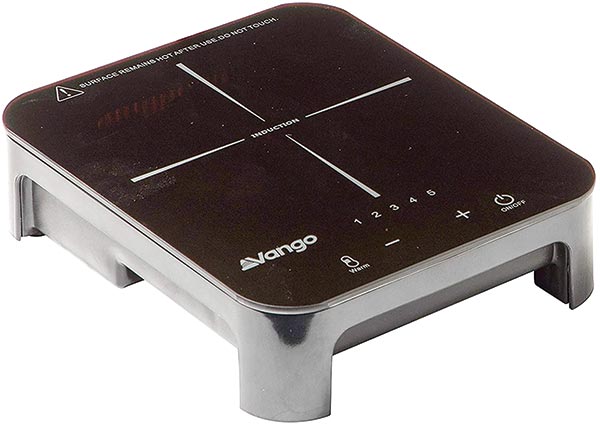
A five-litre tub of methanol costs around £40 and can power a fuel cell at full capacity for about five days (although most users reckon that 15 days is more realistic – a good few weekends away). They’re lightweight, compact and green, but the downside to this is their initial cost. Prices start from £2000 and go up to around £5000 for the top consumer models.
The pros of using electric in your motorhome
- Hobs are easier to clean than gas hobs
- Induction hobs and standalone heaters are cheap
- Induction hobs heat quickly and work well on 230V
- For occasional summer use, it could work for you
- No emissions on the campsite
- Fuel cells efficient and can charge batteries 24/7
The cons of using electric in your motorhome
- Batteries not as energy-dense as fuel, so you would need to install massive capacity
- Not always generated via renewable sources
- Needs a large inverter to run hobs
- Expensive battery bank and kit, especially if you choose lithium iron phosphate
- Running kit on an electric vehicle reduces range
- Cooking is limited without a hook-up
Diesel systems
Most campervans (and if you’re looking for one, be sure to look at our best campervan guide) and motorhomes are diesel and many also have a diesel space- and water-heating system. This is largely done for packaging reasons – diesel heaters are compact and can be tucked away under the ’van to gain extra interior space.
Many will pair them with a gas hob, so have to include a gas locker (although this can be smaller because hobs use less fuel than heaters).
Diesel is more energy-dense than gas, so fewer litres of fuel are needed to heat the vehicle, and they’re designed so they can’t fully drain the tank – they will never leave you stranded. You already have a massive fuel supply built into your vehicle, so why not take full advantage of it?
Less common in motorhomes are diesel hobs (sold by Wallas and Webasto), which are more usually seen in the marine sector. Diesel-powered hobs look similar to induction, with flush-fit, easy-to-clean glass surfaces. Beneath this surface is a metal plate that is heated by the gas burner in a sealed balanced flue system. The diesel burner is entirely contained and can’t exhaust internally – all diesel systems have an external inlet and outlet hose, so there’s no naked flame in the ’van.

From cold, if you have a window or door open you might get a faint whiff of diesel, but careful placement of the exhaust can minimise this. Once warm, there are next to no fumes.
All diesel hobs use a small fan to circulate the air and the noise is comparable to a blown-air gas system or a 240V fan heater. Diesel hobs will take five to 10 minutes to heat up compared to a gas hob, so if you’re a regular tea drinker, you are going to need to be patient.
A couple of years ago, Wallas also introduced a combined hob and heater (the XC Duo), aimed at campervans and small motorhomes, with a maximum output of 1800W (ample for all-year use). This unit fits entirely under the regular gas hob and has an additional fan and venting system to duct hot air over the hob when the lid is shut.
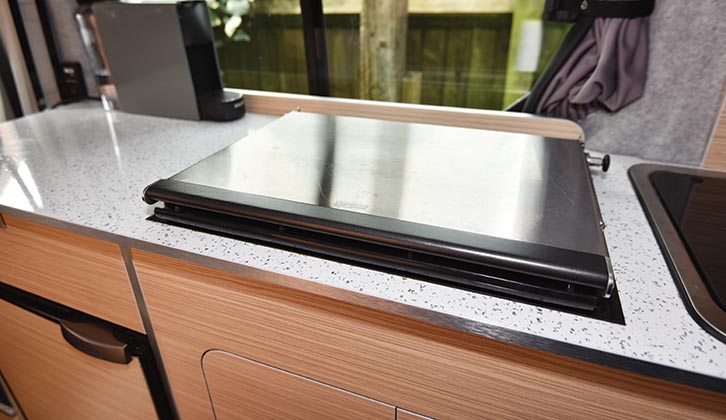
Lid up is cooking mode and lid down is heating mode. This avoids the need for two diesel burners for hob and heating, making it ideal for campers, where space is always at a premium. They also use less electricity to operate the fan than most standalone diesel heaters will do – typically about 0.85A per hour – which means that they will last for an age off hook-up.
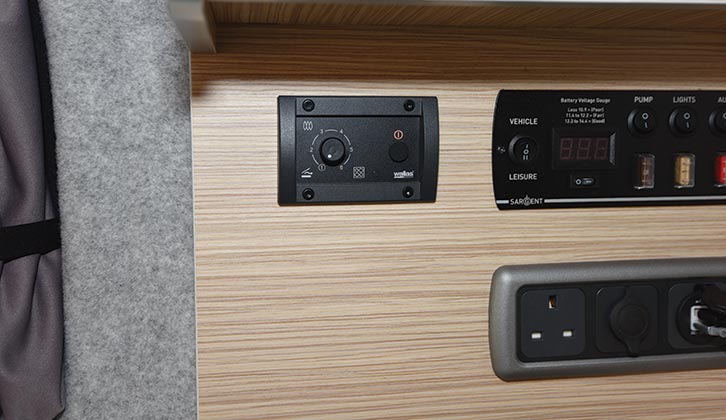
I have one of these combined hob and heater systems in my campervan conversion, and I’ve calculated that a full tank of diesel would last for approximately 30 days with the heating system running non-stop. You would have melted long before the fuel runs out!
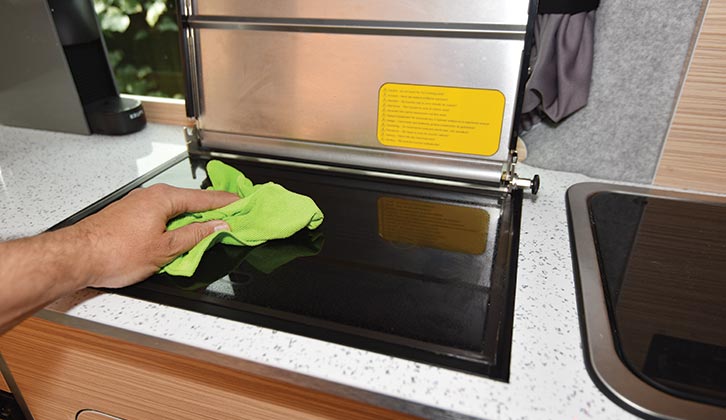
The pros of using diesel in your motorhome
- Diesel hobs are flush and wipe clean
- Combined hob/heater set-up is very compact, making them ideal for campervans
- Diesel heaters can run for days on main fuel tank
- Convenient to refuel
- No gas running in vehicle
- No need for a gas locker/LPG tank
The cons of using diesel in your motorhome
- Diesel hob heats up more slowly than either gas or induction hobs
- Diesel hobs are more expensive than gas/induction
- Using this system does produce a tiny amount of diesel emission on the campsite
- Slight diesel smell outside the vehicle at cold start
Verdict
Which heating and cooking system works best for you depends very much on how you use your ’van. Keen chefs who relish a roast are best served with a gas cooker/hob. If you only cook when you have to, don’t camp all year round and rarely stray far from a hook-up, an electric system could work, so long as your kit is electrically frugal.
For those who don’t want to be tied to hook-up, camp all year round and want convenient refilling throughout Europe, diesel is king. But this is the point – it all depends on you and how you tour. There really is no one-size-fits-all solution.
- Take a look at the DIY motorhome checks you can carry out to help you avoid any small problems becoming big bills.
Future Publishing Limited, the publisher of Practical Motorhome, provides the information in this article in good faith and makes no representation as to its completeness or accuracy. Individuals carrying out the instructions do so at their own risk and must exercise their independent judgement in determining the appropriateness of the advice to their circumstances. Individuals should take appropriate safety precautions and be aware of the risk of electrocution when dealing with electrical products. To the fullest extent permitted by law, neither Future nor its employees or agents shall have any liability in connection with the use of this information. Double check any warranty is not affected before proceeding.
If you’ve enjoyed reading this article, why not get the latest news, reviews and features delivered direct to your door or inbox every month. Take advantage of our brilliant Practical Motorhome magazine SUBSCRIBERS’ OFFER and SIGN UP TO OUR NEWSLETTER for regular weekly updates on all things motorhome related.
